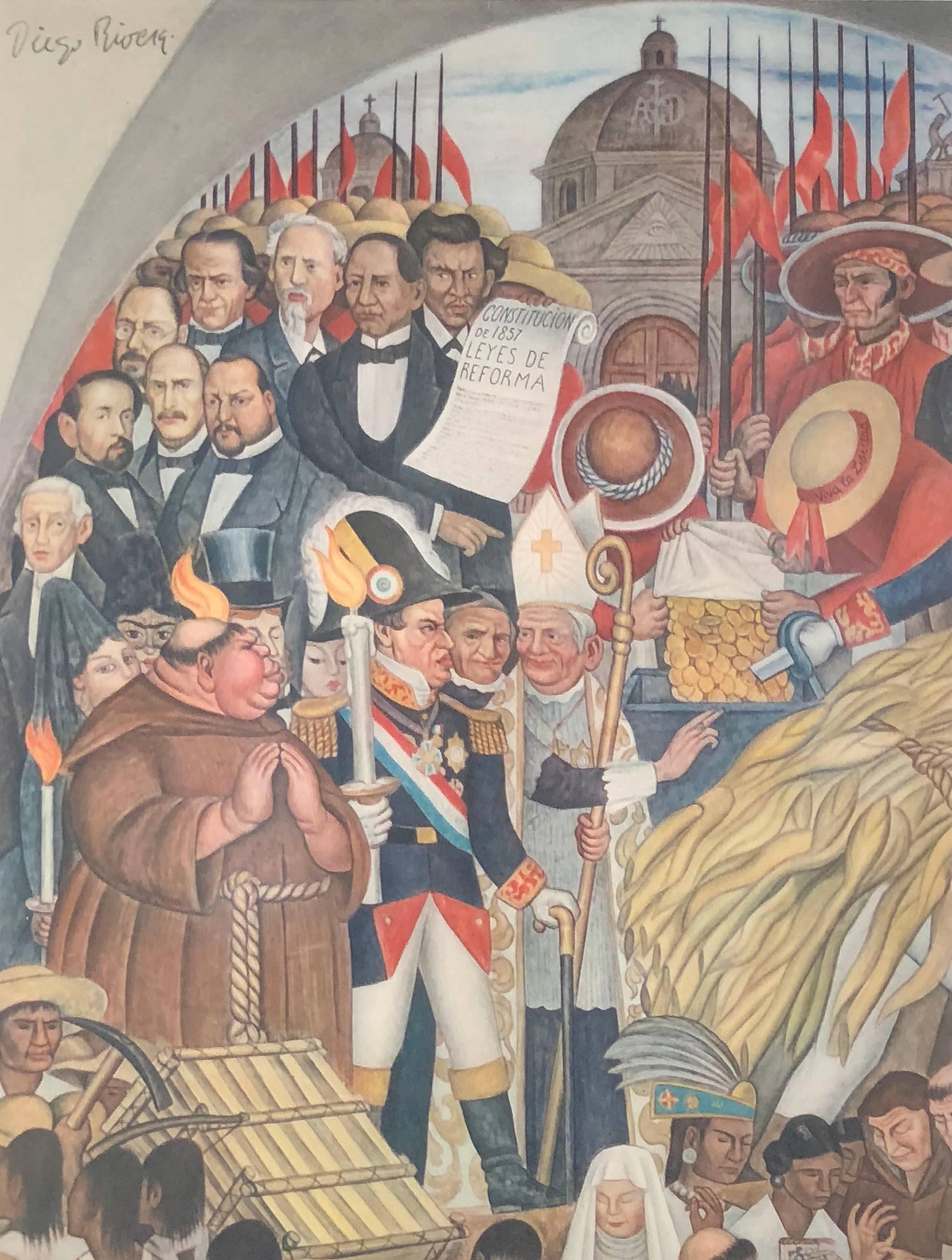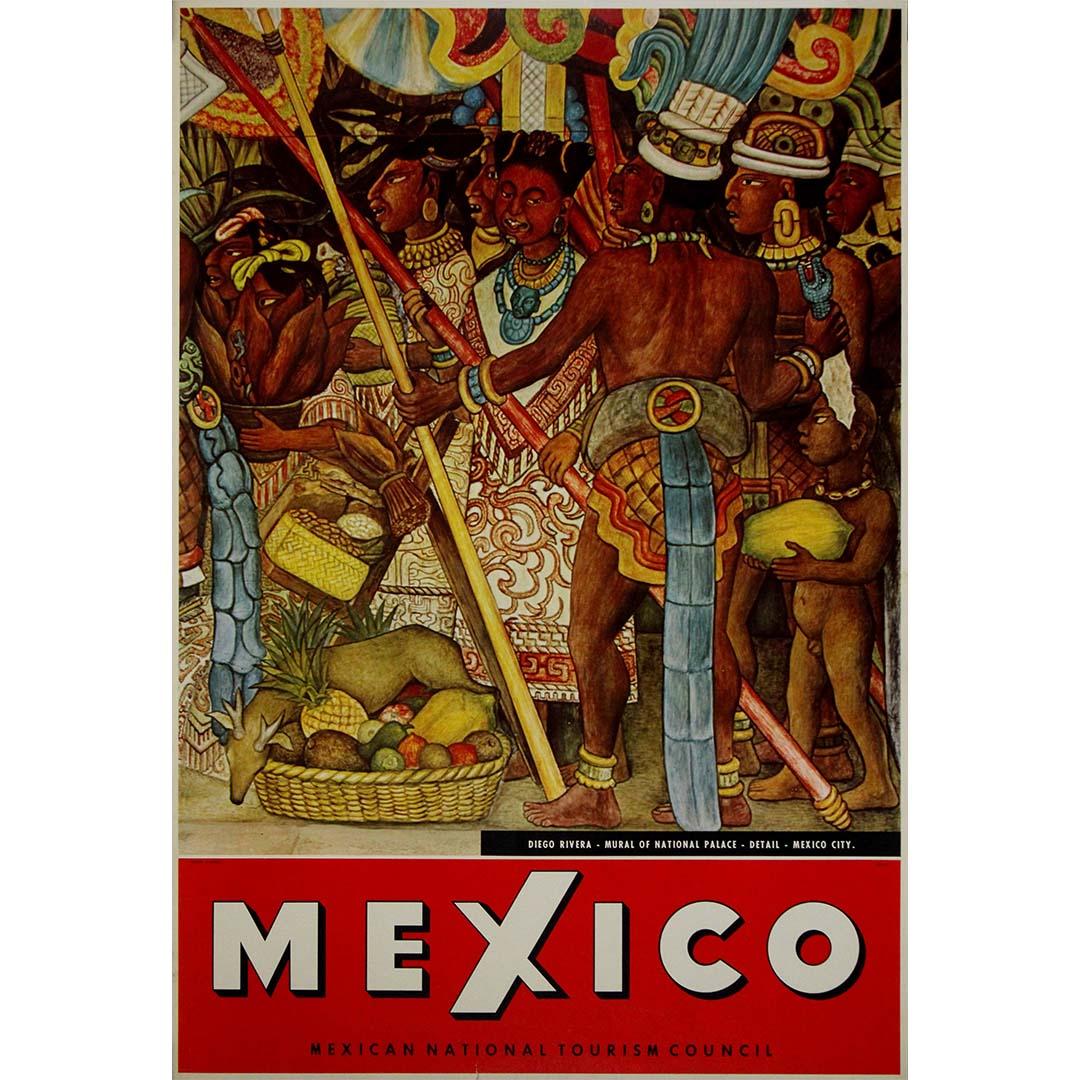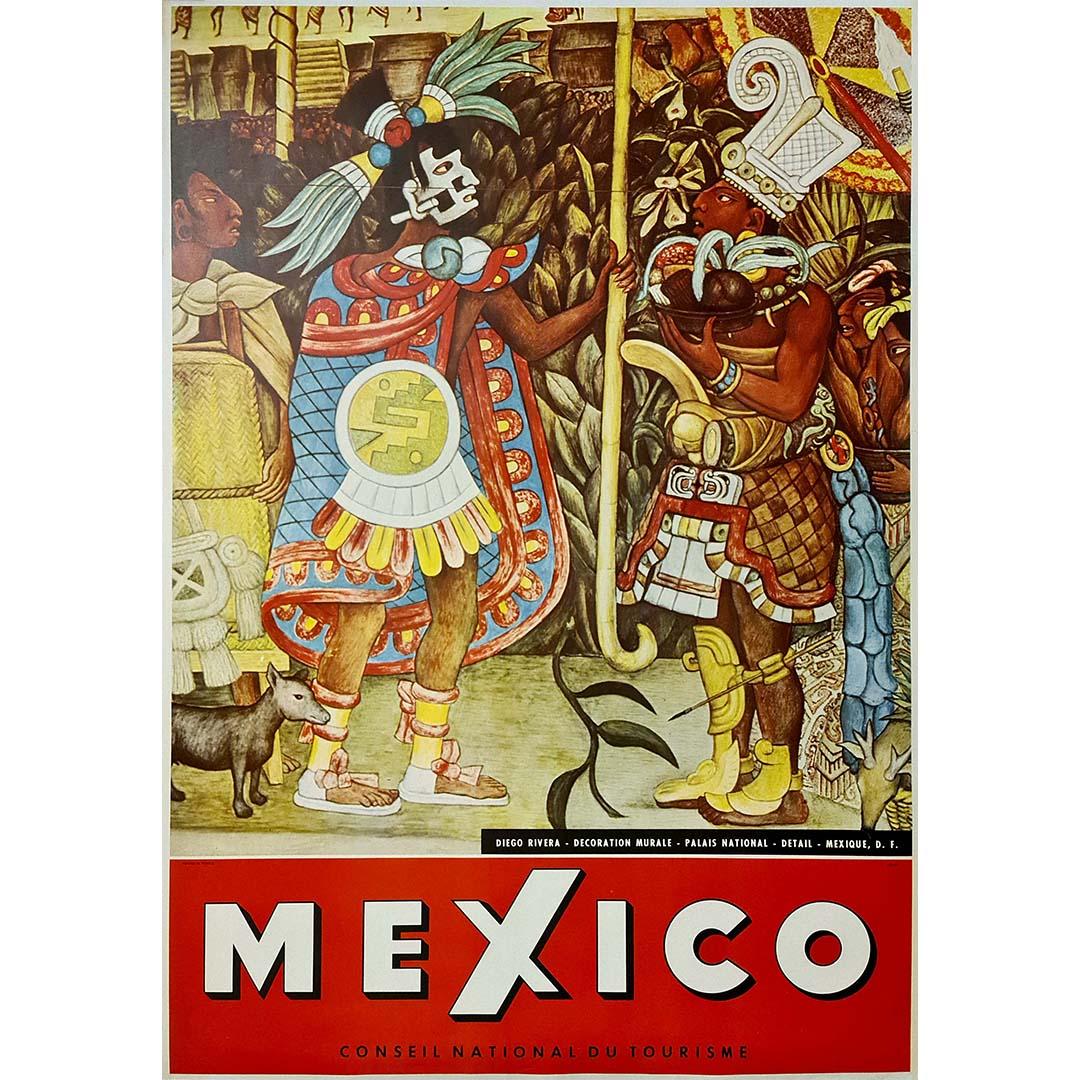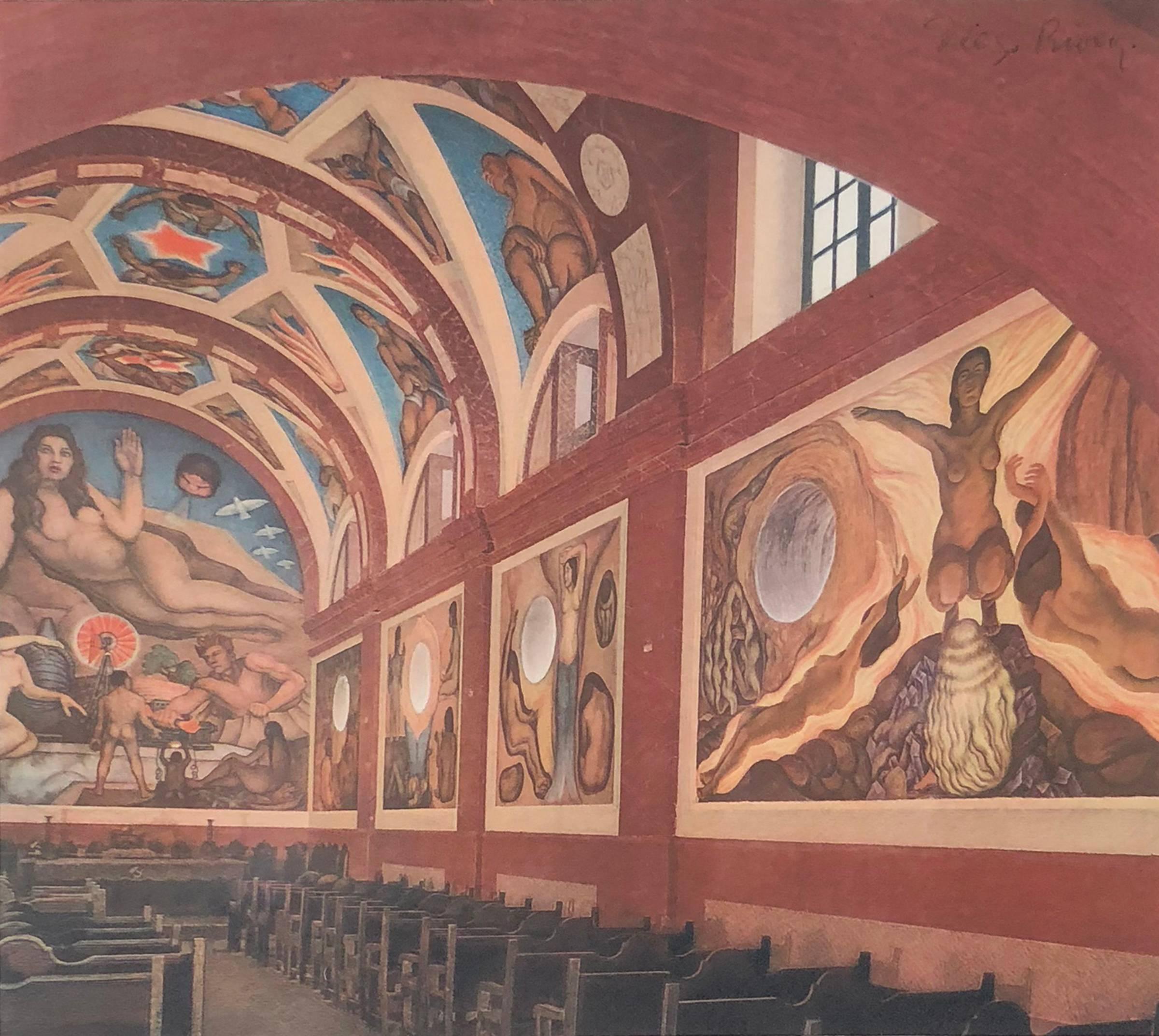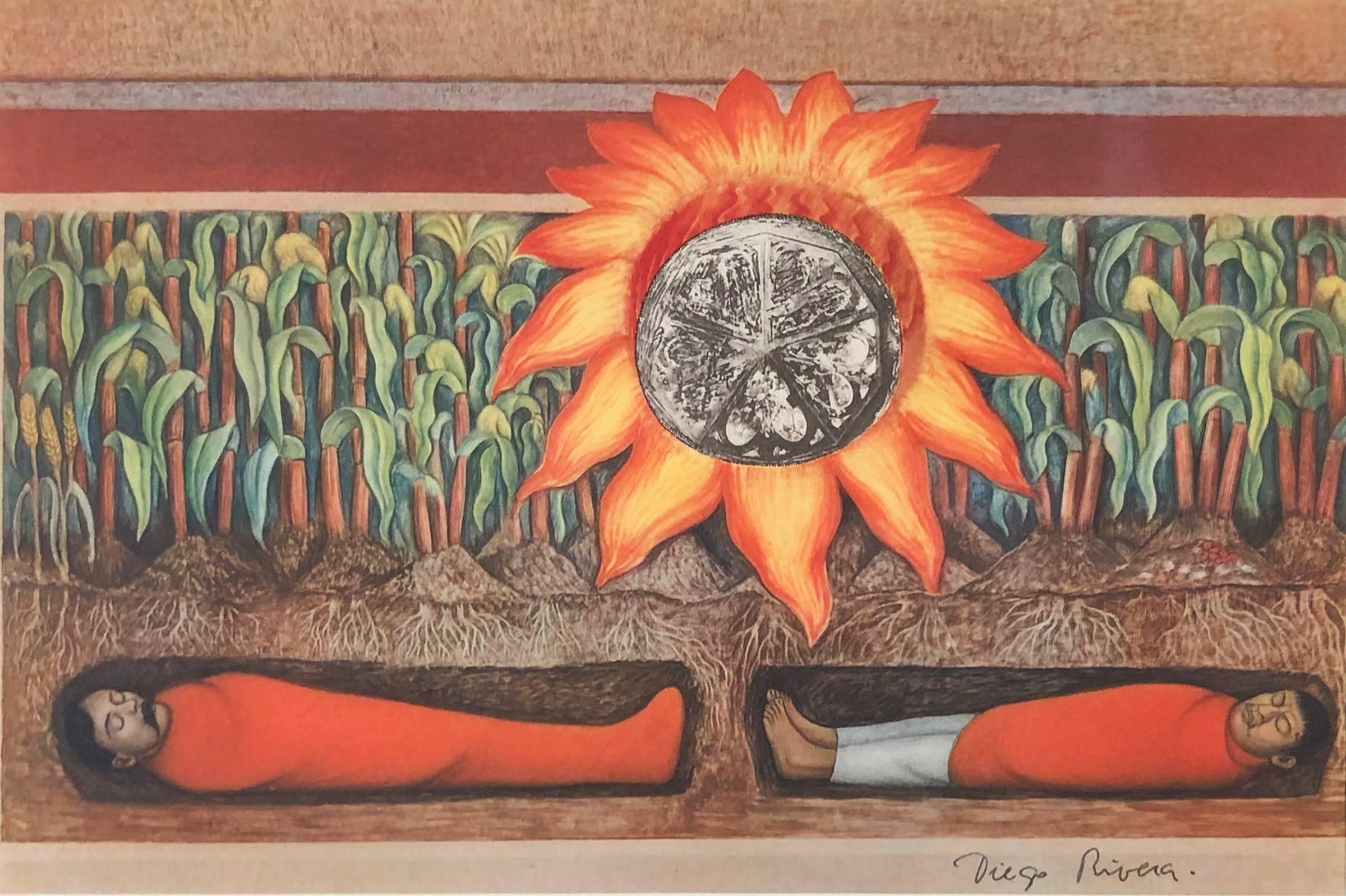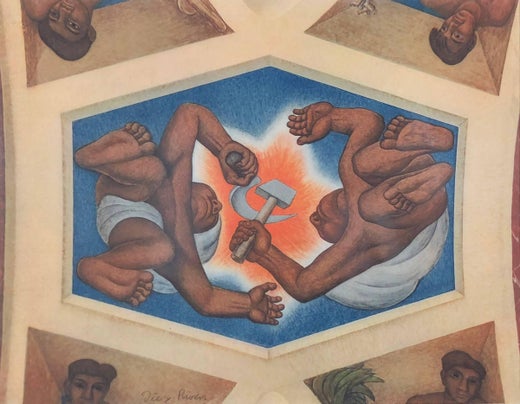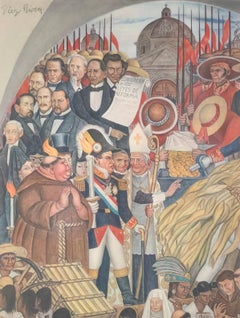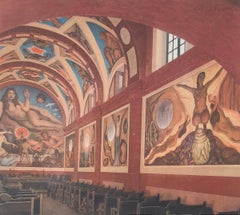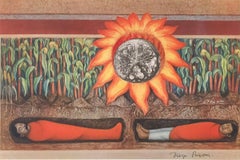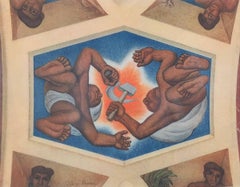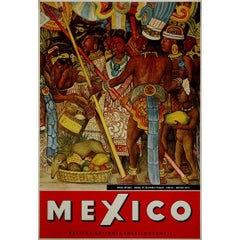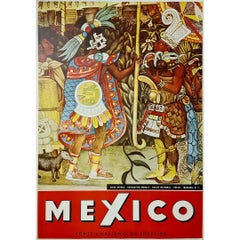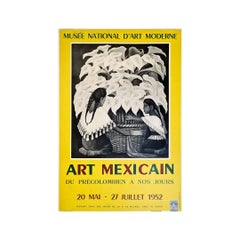(after) Diego RiveraNational Palace Mexico City, Persecution of the Indian, Revolution, Independence1933
1933
About the Item
- Creator:(after) Diego Rivera (1886 - 1957, Mexican)
- Creation Year:1933
- Dimensions:Height: 18.5 in (46.99 cm)Width: 13.5 in (34.29 cm)
- Medium:
- Movement & Style:
- Period:
- Condition:
- Gallery Location:Missouri, MO
- Reference Number:1stDibs: LU74732826553
(after) Diego Rivera
Diego Rivera was a prominent Mexican painter. His large frescoes helped establish the mural movement in Mexican and international art. Rivera was born as one of the twin boys in Guanajuato, Mexico, to María del Pilar Barrientos and Diego Rivera Acosta, a well-to-do couple. His twin brother Carlos died two years after they were born. They were said to have Converso ancestry. After moving to Paris, Rivera met Angelina Beloff, an artist from the pre-Revolutionary Russian Empire. They married in 1911 and had a son, Diego (1916–1918), who died young. Rivera died in Mexico City on November 24, 1957.
- ShippingRetrieving quote...Shipping from: Missouri, MO
- Return Policy
More From This Seller
View All1930s Modern Figurative Prints
Lithograph
1930s Modern Interior Prints
Lithograph
1930s Modern Figurative Prints
Lithograph
1930s Modern Figurative Prints
Lithograph
20th Century American Modern Landscape Drawings and Watercolors
Watercolor
20th Century American Modern Landscape Drawings and Watercolors
Watercolor
You May Also Like
1950s Prints and Multiples
Paper, Lithograph
1950s Prints and Multiples
Lithograph, Paper
1920s Modern Black and White Photography
Silver Gelatin, Paper
1950s Prints and Multiples
Lithograph, Paper
1920s Modern Black and White Photography
Silver Gelatin, Paper
1920s Modern Black and White Photography
Paper, Silver Gelatin
